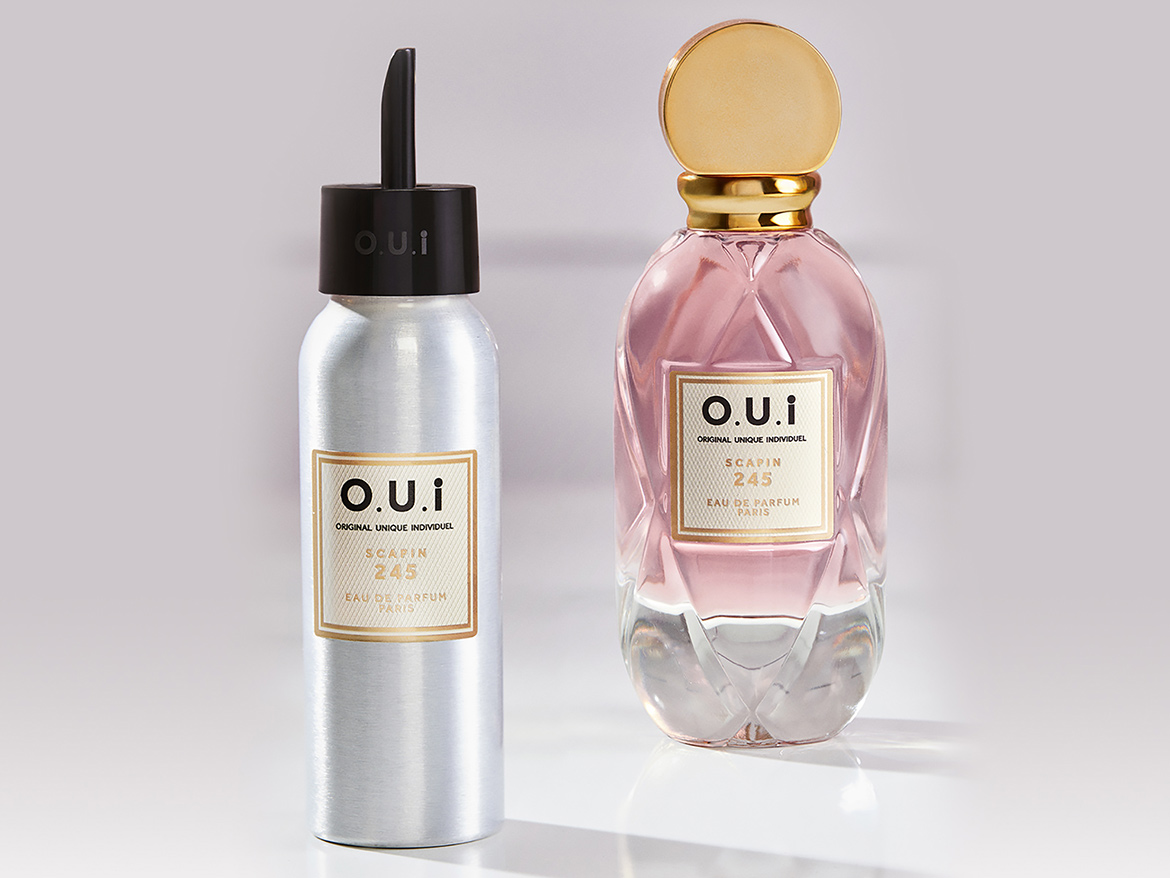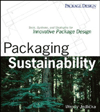Cover Feature
Expert Q&A: Refill models and markets
Ask an Expert

Courtesy of Trivium Packaging
Packaging Strategies recently asked Alexandra Holtzman, director of strategy & business development, Trivium Packaging in the U.S., about the refill model and market and how it resonates with brands seeking sustainable packaging options.
Can you tell us about the different types of refill models that are on the market today?
There are two main types of refill models on the market today.
The first is a "refill at home" model, where the consumer keeps the original container at home and refills with new product. This can be done using a larger container that holds the additional product (for example, a pouch) that is purchased at the store or shipped to the consumer’s home, perhaps as part of a convenient subscription model. There are also examples where consumers use a pod, tablet or concentrate solution, diluting with water at home to refill the original container.
The second is a “refill on the go” model that utilizes in-store dispensing stations. The consumer brings their original container back to the store to refill it.
What’s pushing the market toward refillable packaging?
Increasing consumer desire to move toward a more sustainable lifestyle and growing awareness of the environmental impact of product packaging while also maintaining convenience is a key driver. Eliminating waste is among one of the largest shifts in modern-day consumer demand. Our 2020 Global Buying Green report showed a big shift toward sustainable packaging led by consumer demand. Seventy-four percent of consumers said they were willing to pay more for sustainable packaging, seeking brands that share their value system — and that’s even higher for younger consumers. Consumers are demanding sustainability from brands, both in product and packaging. Our most recent 2021 Global Buying Green report shows that despite a global pandemic, 67% of consumers still find themselves environmentally aware, and 83% of consumers among younger generations showing a willingness to pay more for sustainable packaging.
In addition, brands are getting serious about sustainability goals, making large commitments to lowering emissions, reducing waste and contributing to a circular economy. Retailers too are making a major push for sustainable packaging. You can find brands in sustainable packaging like Hand in Hand occupying prime shelf space, such as aisle end caps. Many smaller, mission-driven brands are being brought to the spotlight and consumers are increasingly choosing brands that share their values.

Image courtesy of Trivium Packaging
What trends are you seeing in the refillable space?
We’ve seen interest in and adoption of our refill packaging solutions in a variety of categories, including beauty and personal care, home care and beverages. We see brands using our products in two main ways:
- Choosing aluminum bottles as the reusable, refillable container that is paired with a wide variety of refill solutions (pouch, pod/tablet for dilution, etc.). Often, these bottles are designed with visual appeal in mind and have a premium look and feel to fit in with the consumer’s home décor. A great example is Petal, which offers beautiful aluminum hand soap dispensers that consumers refill with a soap pod and water, creating a foaming hand soap. Three Main offers environmentally friendly home cleaning products such as surface cleaner, bathroom cleaner, and dish soap. The aluminum bottles that hold the original product are refilled from a large pouch and are designed to be used over and over again. And one of my personal favorites is American Bubble’s Bubble Tree, a refillable bubble system that uses aluminum bottles with an ergonomic grip, a cap-attached wand and fun, colorful designs. The small, kid-friendly bottles are refilled from a large pouch, significantly reducing the use of plastic in the system overall.
- Using aluminum bottles as the refill container to replenish the original container. Lightweight aluminum bottles, which protect and preserve the contents, can be used to hold product that will refill the original container. These single-use refill bottles can then be recycled infinitely versus single-use plastics or other materials with limited or complex recyclability. Grove Collaborative offers several home care products in aluminum bottles, including hand soap and dish soap, intended to refill a glass dispenser bottle. Eddi offers sleek and premium hand soap dispensers with aluminum bottle refills that fit inside the dispenser. We’re also seeing the fragrance industry as an early adopter in using aluminum refill bottles. Grupo Boticario’s O.U.i. brand is the first fragrance brand in Brazil to offer aluminum threaded bottle refills. The brand utilizes uniquely designed and shaped glass containers with lightweight aluminum bottles that utilize a spout to refill the keepsake bottle when empty.
Consumers continue to adopt refillable solutions in products such as soaps and cleaning supplies. However, these categories aren’t the only ones who can benefit from a refillable model. We are beginning to see refillable shampoos and conditioners, deodorants and other personal care products on the market. We believe there are additional categories that could benefit from the right refillable solution, including makeup, lotions, sanitizers, room sprays, etc.

Image courtesy of Trivium Packaging
Why is aluminum a good option for refillable packaging versus plastic or glass containers?
Aluminum offers many benefits to brands looking for sustainable packaging solutions, and specifically for refill models — for both the container that is reused and the container that holds the refill product.
First, metal recycles forever: The material never gets downgraded as other materials like plastic do. Because of the intrinsic value of metal and well-established recycling channels, metal packaging has one of the highest recycling rates with a global average of 60% – 70%.
Aluminum also provides excellent protection against light and oxidation, is rust-proof for shower and sink applications, and offers brands the opportunity to print directly on the packaging, which creates a unique and sophisticated look for the product. Aluminum offers protection from accidental dropping, as it does not shatter and is highly durable.
For reusable containers, our lightweight yet sturdy threaded aluminum bottles can be washed out and refilled multiple times — and when the consumer is done reusing the bottle, it’s easily recycled and goes on to fulfill other purposes.
For containers that hold the refill product, the infinitely recyclable aluminum bottle is the perfect packaging for the purpose of discarding as soon as the original packaging is refilled as it is infinitely recyclable — and at the highest rate of recyclability when compared to other materials — meaning that more people are inclined to recycle aluminum than any other material.

Image courtesy of Trivium Packaging
Grupo Boticario’s O.U.i brand is the first in Brazil to offer aluminum threaded bottle refills for fragrance. Can you tell us more about this packaging?
As the leader in fragrances in the Brazilian market, Grupo Boticario released its O.U.i brand as the first in Brazil to offer aluminum threaded bottle refills for fragrance. The infinitely recyclable aluminum refill bottle is produced by Trivium Packaging in Argentina and uses an advanced alloy that contains 10% post-consumer recycled content.
Refillable packaging for fragrances is being sought by key players like Grupo Boticario as they move toward offering more sustainable products with convenience for the consumer. The use of aluminum perfectly fits sustainability goals for a package that will be discarded after use due to its high recycling rates and ability to be recycled again and again, forever. The packaging appeals to the consumer’s desire to reduce, reuse and recycle.
While Grupo Boticario is an early adopter of aluminum packaging refills in the fragrance category, we expect more to follow.
Looking to the future, where do you see the refill market going?
I think we’ll see many more brands, including mass brands marketed by the largest consumer packaged goods companies in the world, offering refillable options. We’ll see refillable products available in many more categories across beauty and personal care, home care, even food. And I think that brands and consumers alike will find that aluminum is a great refill packaging option. I hope that Trivium has more opportunities to collaborate with sustainability-minded companies to bring these solutions to market.
For more information visit https://triviumpackaging.com
Looking for a reprint of this article?
From high-res PDFs to custom plaques, order your copy today!









